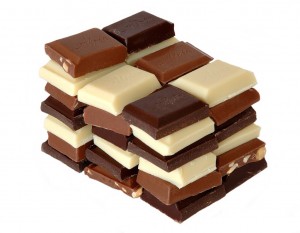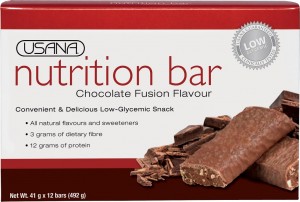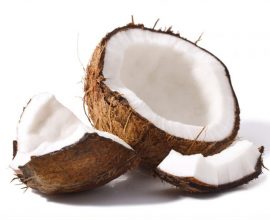
Chocolate lovers unite…
 |
| Ravinder Lilly Writer and Dietitian |
Or, run for cover because it’s Easter, and the sweet stuff is everywhere!
But has chocolate had a bad rap (or wrap, depending on the way you look at it!) nutritionally speaking? Or can chocolate be a part of a healthy diet?
The perfect indulgence?
Choose fair trade products and you’re sharing the love. And, thankfully for chocolate fans, as well as tasting great, enjoying small quantities of really good quality chocolate has health benefits as a growing number of studies suggest that it can be a heart-healthy choice.
That’s because chocolate contains polyphenols, antioxidants that are similar to the potent heart protectors found in wine. Studies even suggest the powerful flavonoids in dark chocolate reduce the stickiness of platelets, cells that play an important role in blood clotting.
The benefits of a little chocolate
Our fast-paced 21st century living means that stress is always around the corner. Stress encourages the body to release adrenalin so that your body is ready to fight or take flight. Another way that stress protects your body is to make your blood thicker – so that in a dangerous event, if you were to be cut, blood would stick together quickly to seal any wound.
But stickier blood is more difficult to transport through the blood vessels and in this way, it increases the danger of coronary artery blockages. So the blood-thinning effects of chocolate give it a small seal of approval.
The type of fat chocolate contains gives it another thumbs up. The fat, called stearic acid, doesn’t raise cholesterol levels like saturated fat and trans fats do. The polyphenols in chocolate also appear to boost levels of healthy HDL-cholesterol (which helps your body get rid of excess blood cholesterol), whilst lowering harmful LDL-cholesterol (the type of cholesterol which is linked with fatty deposits in the arteries.
Another positive for heart health is the main ingredient in chocolate, cocoa. This contains flavenols which may help lower blood pressure and improve vascular (blood vessel) function. Some research has even linked chocolate consumption with reduced risk of diabetes, stroke and heart attack. However, the studies are small and more research is needed for a definitive tick of approval. Good quality chocolate also contains low levels of iron, calcium, magnesium, and vitamins.
The bottom line is that good quality chocolate isn’t a bad choice – just don’t go overboard and demolish the whole egg/block. Go for small amount of plain chocolate not the truffle packed, sugar-coated, lolly-stuffed kinds.
And now for the down side…
But the news isn’t all good though. Most chocolate has lots of added ingredients to improve its chocolate’s palatability. These ingredients are added fat and added sugar which clock up a massive total of calories; 100g chocolate provides 23 grams of sugars, nearly 13g fat, just 1g fibre and 230 calories – about the same number of calories as in a small burger.
You already know that around 60 per cent of adults in Australia and New Zealand are overweight or obese and this is linked with increased risk of heart disease and type 2 diabetes and other chronic conditions. And, our children are picking up unhealthy habits – according to the Australian Bureau of Statistics, around one in four children is overweight.
Indulge without the bulge?
The best way to enjoy chocolate for you and your children is to go for quality rather than quantity. This may take some getting used to if you’re used to regular off-the-shelf milk varieties. Choose dark chocolate with cocoa content of 70 per cent or above when you can.
Try to limit yourself to around (85 grams) a day, which is the amount some studies have shown to have health benefit. But beware – just this small amount can clock up to around 200 calories. For the ‘average’ 70kg woman, this would mean you’d have to walk for 45 minutes to burn it off. So, if you don’t want to gain weight, it’s essential to do more exercise and burn the calories or reduce your calories from other foods and drinks to compensate.
So, as you gaze at the chocolate mass that awaits you at every corner, you just have to face it. Quality over quantity. And moderation is the key.
Enjoy it!
Try to have a drink or something to eat so that you’re not ravenous. Then, when you do get down to it, eat that delicious piece of chocolate very slowly – allow it to melt in your mouth and enjoy every single mouthful. Remember, it takes about twenty minutes for your brain to register that your stomach is full so by eating slowly, you won’t overeat and you’ll be more in control of your calories which is especially important if you’re watching your weight
After the Easter festivities are over, try to satisfy your chocolate cravings without quite as many calories. Try stirring in some cocoa to low-fat, low-sugar custard, sprinkle some rice pudding with cocoa and cinnamon or stir a little plain chocolate into skim or soy milk. Or, tuck into one of USANA’s Chocolate Fusion Nutrition bars; one bar provides just 4g fat, 12g protein and 3g fibre in just 160 calories – so you get the chocolate hit without the sugar surge and slump. And the low GI and high protein content keep you satisfied for longer, too.
Happy Easter everyone!






